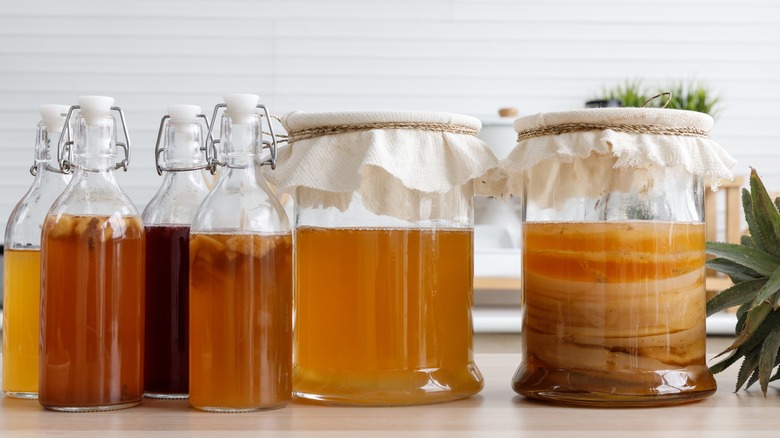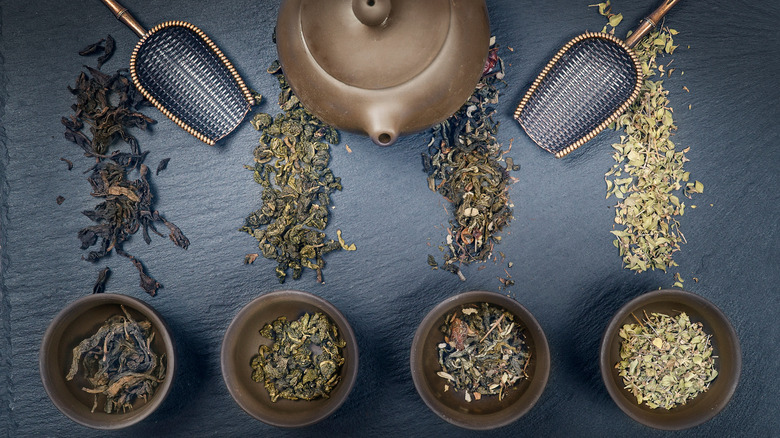Why You Shouldn't Use Herbal Teas For Kombucha
Kombucha is widely seen as a mark of hipster culture, served right alongside some avocado toast, but while many think of it as a modern trend, people have been drinking kombucha for thousands of years. According to Forbes, it can be traced back to about 220 B.C. in the northeast region of China historically known as Manchuria. It got its name in Japan, where Emperor Inkyo was introduced to the beverage by a Korean physician named Dr. Kombu. In Europe, Britannica notes, kombucha may have been introduced alongside other kinds of tea via the Silk Road trade route, becoming particularly popular in rural Russia. It took a lot longer for kombucha to come to America though, not gaining any notable popularity until the late 20th century.
Kombucha is, at its core, fermented tea, although many are mixed with fruit juices to offer a wide selection of flavors. Britannica explains that production starts by brewing tea with sugar, then mixing it with a SCOBY, which stands for "symbiotic culture of bacteria and yeast." It's a gelatinous disk made of multiple yeast species, notably Saccharomyces cerevisiae, as well as bacteria like Gluconacetobacter xylinus. During fermentation, the yeast produces alcohol which the bacteria convert into acid, creating the tart, vinegar-like flavor associated with kombucha. It's a remarkable process, but it's finicky. You have to use the right ingredients, and herbal tea just won't do.
Use black, green, or oolong tea for the best kombucha
In order for the fermentation process to take place, the yeast in a SCOBY needs things to feed on, which is why you add sugar during the brewing process, per tea manufacturer Teatulia. It also needs nutrients from the tea leaves, specifically nitrogen, theanine, and caffeine. These nutrients are generally scarce in herbal teas, but they are abundant in so-called "true tea." Another tea manufacturer, Rishi, explains that "true tea" refers to the leaves of the Camellia sinensis plant. From this single bush, we get black, green, white, yellow, oolong, and Pu'er teas, all differentiated by how the leaves are oxidized.
According to Teatulia, you should use either black, green, or oolong tea to give yourself the best shot at a successful batch of home-brewed kombucha. You can even blend all three. Avoid tea blends that contain chamomile or peppermint, as both contain natural oils that can harm the SCOBY. For this same reason, you want to avoid any teas that contain oil for flavoring. With a little know-how, you can avoid this common pitfall in kombucha brewing.

